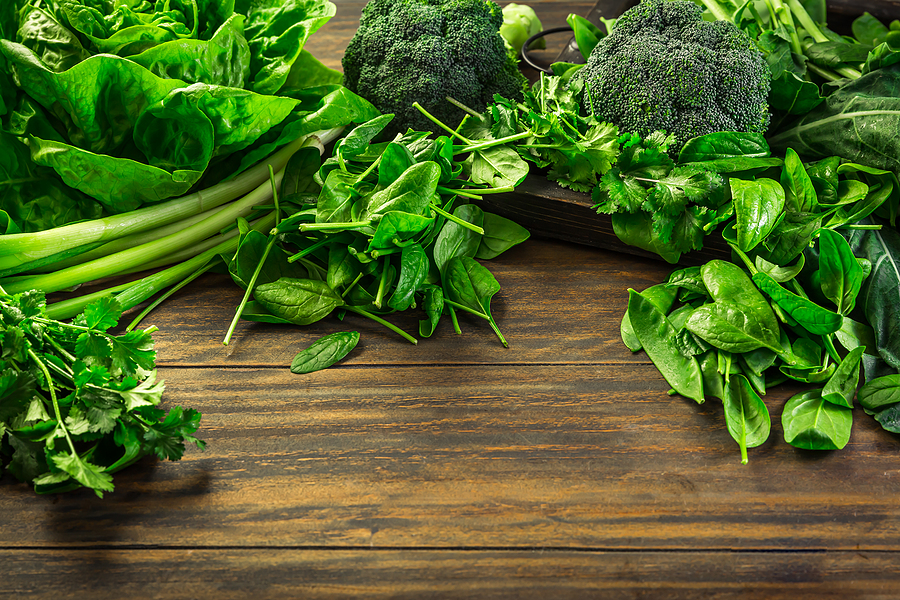9 Best Greens to Boost Your Nutrition: Spinach, Kale, and More
Eating your greens isn’t just a mantra; it’s a gateway to better health. From boosting your immune system to enhancing your skin’s glow, the benefits of incorporating leafy greens into your diet are endless. But with so many options available, which ones should you prioritize?
In this article, you’ll discover the 9 best greens that pack the most nutritional punch. Whether you’re a salad enthusiast or looking to diversify your meals, these greens will elevate your diet and well-being. Get ready to transform your plate and your health with these powerhouse veggies.
Unveiling the First of the 9 Best Greens: Spinach
Spinach stands out as a nutritional powerhouse among leafy greens. Let’s explore its benefits and ways you can enjoy it in your meals.
Nutritional Benefits of Spinach
Rich in vitamins and minerals, spinach is a must-have for a balanced diet. One cup of raw spinach provides 181% of your daily Vitamin K needs, crucial for bone health and blood clotting (source: NIH). It’s also packed with Vitamin A, promoting good vision and skin health. Spinach is a great source of iron, which helps transport oxygen throughout your body. Additionally, it contains antioxidants like lutein and zeaxanthin, protecting your eyes from oxidative damage.
Delicious and Simple Spinach Recipes
Enjoy spinach in various easy-to-make dishes. For a quick breakfast, try a spinach and feta omelet. Simply whisk eggs, add chopped spinach and crumbled feta, then cook until set. For lunch, make a refreshing spinach salad. Mix fresh spinach, strawberries, pecans, and feta, then drizzle with balsamic vinaigrette. At dinner, enhance your pasta with a creamy spinach sauce. Sauté garlic in olive oil, add spinach until wilted, then blend with cream and Parmesan for a delectable sauce.
Exploring the Second Best Green: Kale
Revered as a superfood, kale ranks high for its health benefits and versatility. Here’s what makes it exceptional and how you can incorporate it into your diet.
Why Kale Stands Out for Your Health
Packed with Nutrients: Kale offers an abundance of vitamins A, C, and K, along with calcium and antioxidants. These nutrients support overall health, including strong bones and a robust immune system.
Rich in Fiber: Eating kale boosts your digestive health with its high fiber content, which aids in maintaining regular bowel movements and improving gut health.
Low in Calories: This leafy green is nutrient-dense and low in calories, making it ideal for weight management and promoting a feeling of fullness without excess calorie intake.
Easy Ways to Enjoy Kale
Smoothies: Blend kale with fruits, yogurt, and a splash of almond milk for a nutritious smoothie. This is a great way to start your day with a burst of energy.
Salads: Toss kale with olive oil, lemon juice, and your favorite veggies for a refreshing and healthy salad. Massaging the leaves with a bit of olive oil can make them tender and more palatable.
Kale Chips: Bake kale leaves with a light drizzle of olive oil and a sprinkle of sea salt for a crunchy, healthy snack. These chips are a fantastic alternative to potato chips.
Stir-fries: Add chopped kale to your stir-fries for an extra nutritional punch. It pairs well with proteins like chicken or tofu and other veggies.
Incorporating kale into your diet is effortless, and its health benefits are immense. Give these suggestions a try and enjoy the goodness it brings to your table.
The Third Powerhouse Green: Swiss Chard
Swiss Chard is often overlooked, but it’s loaded with essential nutrients. This vibrant leafy green offers numerous health benefits with its unique taste and versatility in the kitchen.
Key Vitamins and Minerals in Swiss Chard
Swiss Chard is a nutritional powerhouse. It’s rich in vitamins A, C, and K, which support eye health, boost the immune system, and promote blood clotting, respectively. It’s also packed with magnesium, potassium, and iron. These minerals play critical roles in muscle function, blood pressure regulation, and red blood cell production. One cup of cooked Swiss Chard provides around 700% of your daily vitamin K requirement.
Creative Swiss Chard Dishes
Swiss Chard can be deliciously versatile. Sauté Swiss Chard with garlic and olive oil for a quick side dish. Add chopped leaves to soups and stews to boost their nutritional value. Use the large leaves as wraps for your favorite fillings in place of tortillas. In pasta dishes, Swiss Chard can be a colorful addition. For breakfast, incorporate it into omelets or frittatas for an extra nutrient punch. With these ideas, you can easily enjoy Swiss Chard’s benefits regularly.
Discovering the Fourth Leafy Green: Collards
Time to explore the wonderful world of Collards! Known for their broad, dark green leaves, collard greens carry a rich history and are packed with nutrients.
Health Advantages of Collard Greens
Rich Nutrient Profile. Collards boast high levels of Vitamins A, C, and K. They also provide essential minerals like calcium, iron, and magnesium which support bone health, boost immunity, and improve muscle function.
Antioxidant Power. These greens are loaded with antioxidants like beta-carotene and quercetin. Antioxidants combat free radicals, reducing oxidative stress and lowering your risk of chronic diseases.
Fiber Content. Collard greens are an excellent source of dietary fiber. Consuming them regularly can enhance digestion, keep your blood sugar stable, and promote heart health by lowering cholesterol levels.
Tasty Recipes Featuring Collards
Southern-Style Braised Collards. Slow-cook collards with a bit of smoked ham hock, garlic, and onions. This traditional dish offers a robust flavor that pairs perfectly with cornbread.
Collard Green Wraps. Use collard leaves as a low-carb alternative to tortillas. Fill them with your favorite proteins, veggies, and a tangy dressing for a nutritious and delicious meal.
Sautéed Collards with Garlic. Simply sauté collard greens with garlic and olive oil for a quick, healthy side dish. Add a dash of red pepper flakes for a bit of heat.
Collard Greens Pesto. Blend collards with nuts, Parmesan cheese, garlic, and olive oil to create a unique, nutrient-dense pesto. Use it as a spread or mix it into pasta.
Highlighting the Fifth Marvelous Green: Arugula
Arugula’s Unique Flavor and Health Perks
Arugula, also known as rocket, offers a peppery and slightly bitter taste that adds a punch to your meals. It’s rich in vital nutrients like Vitamins A, C, and K, folate, and antioxidants. These nutrients support your immune system, boost bone health, and improve cardiovascular function. Consuming arugula regularly can help reduce inflammation and detoxify your body due to its high phytonutrient content.
Serving Suggestions for Arugula
Versatility is one of arugula’s standout traits. Toss it in salads to enhance the flavor or mix it with baby spinach for a milder taste. Add arugula to your pasta dishes or use it as a pizza topping for a peppery twist. Create a unique arugula pesto by blending it with garlic, Parmesan cheese, and olive oil. You can even use arugula in sandwiches and wraps to replace lettuce, giving your meal an extra zing.
Emphasizing the Sixth Nutrient-Dense Green: Romaine Lettuce
Romaine’s Role in a Balanced Diet
Romaine Lettuce stands out as a crunchy, refreshing green loaded with essential nutrients. High in Vitamins A, K, and C, it enhances your immune system, supports bone health, and promotes collagen production. The folate and fiber in romaine contribute to heart health and better digestion. It’s also low in calories, making it perfect for weight management plans. Consuming romaine regularly can help elevate your dietary intake of water, given its high water content, keeping you hydrated.
Quick and Easy Romaine Recipes
Incorporate romaine into your meals effortlessly:
- Classic Caesar Salad – Toss chopped romaine with Caesar dressing, croutons, and Parmesan cheese.
- Romaine Wraps – Use large romaine leaves as wraps filled with grilled chicken, avocado, and tomatoes.
- Grilled Romaine – Grill romaine halves for a smoky, charred flavor, then drizzle with olive oil and balsamic vinegar.
- Romaine and Fruit Salad – Mix romaine with fresh berries, nuts, and a light vinaigrette for a sweet and savory dish.
- Green Smoothie – Blend romaine, banana, spinach, and your favorite milk for a nutrient-packed drink.
These simple recipes show how versatile and delicious romaine can be in a balanced diet.
The Seventh Green on the List: Mustard Greens
Mustard greens are a flavorful addition to your list of healthy greens. These leafy vegetables pack a powerful punch with a uniquely spicy flavor.
The Spicy Edge of Mustard Greens
Known for their peppery taste, mustard greens add a zesty kick to your meals. These greens are anti-inflammatory and rich in Vitamins A, C, and K. Incorporating them into your diet can boost your immune system and support eye and bone health. Mustard greens also contain glucosinolates, compounds that may have cancer-fighting properties.
Incorporating Mustard Greens into Meals
Adding mustard greens to your dishes is easy and versatile. Sauté them with garlic and olive oil for a quick side dish. Toss them into soups and stews for extra nutrients and flavor. You can also blend them into green smoothies for a spicy twist or add them raw to salads for a crunchy bite. Another great option is to stir-fry them with soy sauce and sesame oil for an Asian-inspired dish. Experiment with these ideas and enjoy the health benefits of mustard greens.
Exploring the Eighth Excellent Green: Bok Choy
Bok choy, a staple in Asian cuisine, is slowly making its way into kitchens around the world. Known for its crisp texture and mild flavor, it’s a versatile addition to your diet.
Bok Choy’s Asian Heritage and Nutritional Value
Originating from China, bok choy has been a culinary favorite for centuries. It boasts an impressive nutritional profile, packed with vitamins A, C, and K and minerals like calcium and magnesium. Rich in antioxidants, it supports immune function and bone health, making it a powerhouse green.
Simple and Delicious Ways to Prepare Bok Choy
Steaming: Steam bok choy for a tender yet slightly crisp texture. Drizzle with soy sauce and sesame oil for a light side dish.
Sautéing: Sauté with garlic and ginger for a quick, flavorful dish. Add a splash of soy sauce for a savory kick.
Stir-Frying: Combine with other vegetables and proteins in a stir-fry. Its mild flavor complements various sauces, from tamari to oyster sauce.
Soups: Add bok choy to broth-based soups. It absorbs flavors well, enhancing the overall dish.
Grilling: Cut in half, brush with olive oil, and grill until tender. Season with salt and pepper for a smoky finish.
Concluding with the Ninth Green: Watercress
Health Benefits of Watercress
Watercress packs a punch with its high nutrient density. It’s loaded with vitamins A, C, and K, which support eye health, immune function, and bone strength. Rich in antioxidants, it helps combat oxidative stress, potentially lowering your risk of chronic diseases. Studies suggest that watercress may also have anti-cancer properties due to its high levels of glucosinolates, compounds shown to inhibit cancer cell growth.
Flavorful Watercress Recipe Ideas
Add watercress to your meals for both flavor and nutrition. Toss a handful into your morning smoothie for a peppery kick. Use it as a base for salads, combining it with citrus fruits, avocados, and nuts for a refreshing dish. Create a watercress soup; blend it with potatoes, leeks, and a splash of cream for a comforting bowl. You can even garnish your sandwiches or wraps with watercress to elevate their taste and nutrient content.
Conclusion on the 9 Best Greens
Incorporating a variety of these nine greens into your diet can significantly boost your nutrient intake while adding flavor and versatility to your meals. From the familiar spinach and kale to the nutrient-dense watercress, each green offers unique health benefits and culinary possibilities.
Experiment with different recipes and cooking methods to discover new favorites. Whether you’re blending them into smoothies, tossing them into salads, or cooking them into soups, these greens can enhance both your health and your palate.
Don’t hesitate to mix and match these greens to keep your meals exciting and nutritious. By making these greens a staple in your diet, you’re taking a proactive step towards better health and well-being.






